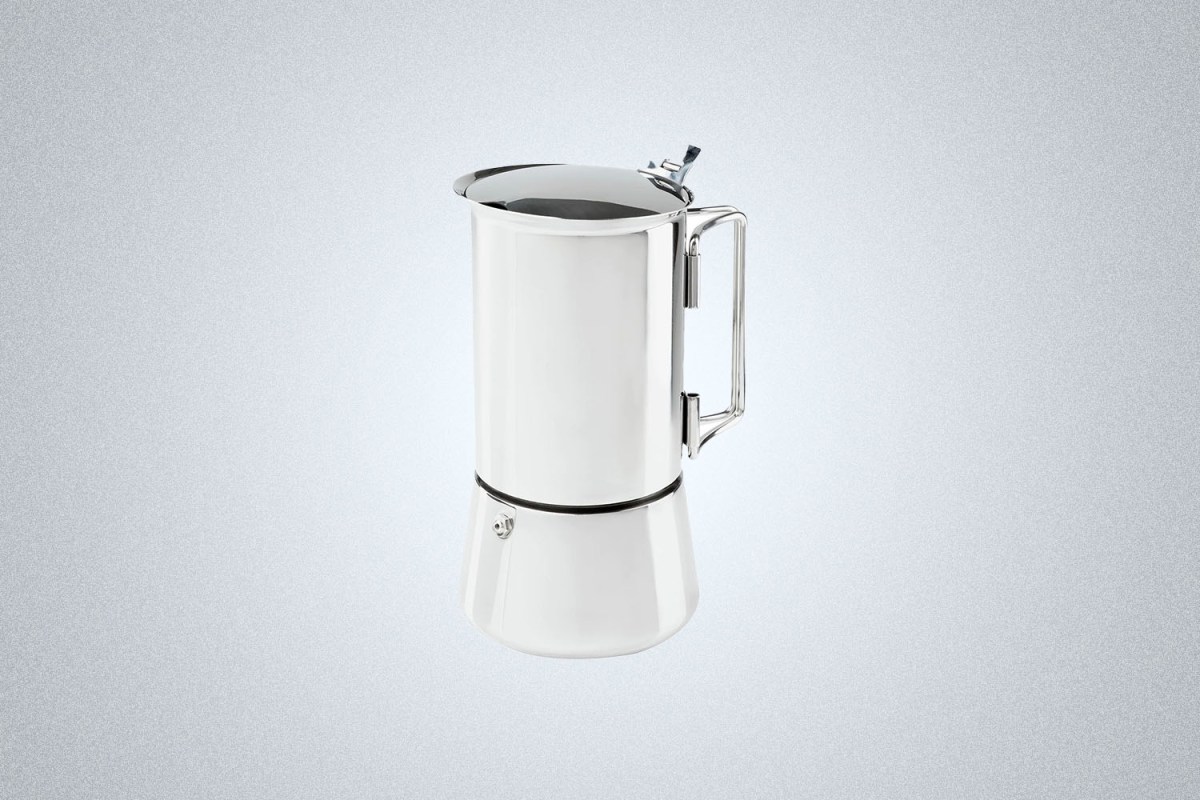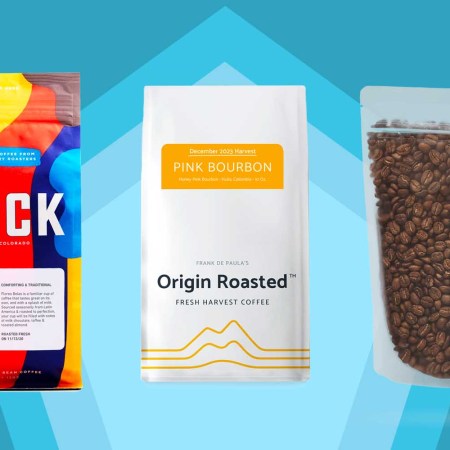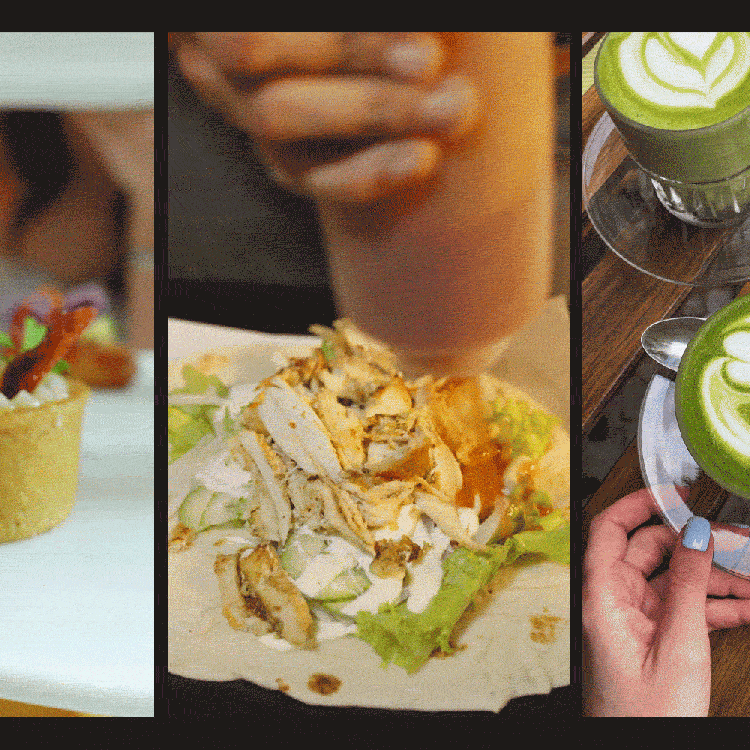Nota bene: All products in this article are independently selected and vetted by InsideHook editors. If you buy something, we may earn an affiliate commission.
We’ve all seen the little metallic-looking stovetop coffee pots in action. Hollywood movies show them used by folks in cute little countryside villages, making a small cup of coffee to start the day. American travelers on vacation sometimes come face to face with the odd little vertical pots while renting a vacation home in Europe. But with a little know-how, these stovetop coffee makers are easy to use and produce a strong, quality cup of coffee.
For Garret Oden, publisher of Fresh Cup Magazine, there’s something appealing about making coffee with a non-automated process. “The coffee world has always had a significant segment of people that love making their coffee with manual brewing methods. I think it’s because most people want the ownership and pride of making something they love by hand, and coffee is a great way to do that, where the barrier of entry is not too high, but the return on investment (better flavor) is great.”
Matt Woodburn-Simmonds of the popular blog The Home Coffee Expert, sums up this category of coffee maker a bit more pragmatically. “Stovetop coffee makers remain very popular as they are very cheap, easy to use and nearly unbreakable. Even with the increased availability of affordable single-serve coffee makers, the stovetop coffee maker is still around a third of the price. You’re also not locked in to using specific coffee pods from one brand, either, so you can experiment with different beans, which also saves money.”
More Coffee
The 7 Best Drip Coffee Machines
Your morning routine just got a lot less complicatedMoka pots are often marketed as “stovetop espresso machines,” but do not, in fact, actually brew true espresso. To qualify as espresso, hot water is forced through ultra-fine coffee grounds at 8 to10 bars of pressure. At maximum, moka pots produce two bars of pressure, which simply isn’t enough to rate the resulting product as a true espresso.
“Stovetop coffee makers make a style somewhere between espresso and drip coffee,” Woodburn-Simmonds says. “The coffee is extracted under a small amount of pressure giving a more intense flavor than simple drip, but not enough pressure to give the depth and intensity of ‘true espresso.’ This gives a slightly more syrupy mouthfeel than normal drip coffee, as the water is boiling as it is forced through the grounds, the coffee tends to be a bit more bitter too.”
Despite not rating as real espresso, moka pot coffee is intense, thick, and very well matched to make lattes, Americanos, and other drinks typically made with real espresso. Below we’ll help you find the best stovetop coffee maker for any kitchen set-up or coffee enthusiasts.
How the Stovetop Coffee Maker Brews Coffee
The water at the bottom of the pot is heated and as it starts to boil it is forced up the narrow spout through the coffee grounds. The coffee then bubbles out the top of the spout into the upper chamber. It’s a process that is still loved to this day by coffee experts precisely because it isn’t automated. It takes a little bit of work, but that’s part of the appeal.
The Moka pot was different from any other brewing method at the time it was created, the 1930s, as pressure was only possible using a manual handle on big machines, Woodburn-Simmonds notes. “The portable and home use friendly design allowed everyone to have this “espresso” style of coffee. It wasn’t until the late 1940s that espresso with the nine bars of pressure we expect today was created.
Now the style of coffee from a stovetop coffee maker is still unique enough to be popular. “It’s also cheap, portable, and easy to use. Not a common trifecta of features in the coffee world,” Woodburn-Simmonds says.
What to Avoid While Using the Coffee Maker
In this day and age of automatic everything, it’s important to remember that manual processes can require a bit more babysitting. “The only thing to be aware of when you first use a stovetop coffee maker is to keep an eye on it, you don’t want them to be boiling dry and forgotten on the stove, Woodburn-Simmonds says. “Also make sure you use the correct grind of coffee, it should be a little finer than regular drip coffee makers. If it’s too fine you can clog your moka pot so avoid using espresso grind coffee.”
History of the Stovetop Coffee Maker
So where, exactly, was the moka pot created? Italian Luigi di Ponti invented the little machine in 1933, and the design was quickly put into production by Alfonso Bialetti, a machinist from Piedmont. The name was inspired by the city of Mocha in Yemen, famous at the time for its high-quality coffee. In Italy today, the design is sometimes called a macchinetta or a caffettiera.
Things to Consider
Here are a few tips that can make a huge difference in the quality of your stovetop brew. Fill the bottom section of the pot with pre-heated water to avoid “baking” your coffee grounds as the water comes to boiling. This will help reduce bitterness. Once the brew is finished—one telltale sign is the pot begins “spitting” and making noise, which signals all the water has been pulled up through the filter and coffee grounds—wrap the device in a cold towel, or run it under cold water to cool the walls, helping prevent the coffee inside from overcooking and becoming bitter.
6 Coffee Subscription Services for a Better Cup of Joe
They can skip the grocery store coffee from now onYou should also expect moka pot coffee to taste different than what most Americans are accustomed to. “The taste depends a great deal on the sort of coffee you’re having. To me, it certainly has a ‘home-made’ feel to it, because of the associations I have with its production. I suppose a stove-top brewer has a slightly grittier mouthfeel, but that is part of its charm,” Adam says.
The Best Stovetop Coffee Makers
• The Classic: Bialetti Moka Express
• The Daily Driver: GSI Moka Espresso
• For the Traveler: GSI MiniEspresso 4 Cup
• For the Style-Minded Caffeine Seeker: Grosche Milano
• Sleek and Elegant: LuxHaus Moka Pot
• The Deluxe Option: Cuisinox Roma Stainless Steel
• The Affordable Option: Elegant Foodie Stovetop Coffee Maker
The Classic: Bialetti Moka Express
Billed as “the original Italian Moka coffee maker,” Bialetti’s Moka Express has been a staple in Italian homes since 1933. Designer and company founder Alfonso Bialetti chose to craft the easy-to-use coffee maker from aluminum, a lightweight, corrosion-resistant material he felt lent a modern feel. “Fast, strong, resistant; like caffeine,” he opined about the material. The iconic eight-sided design was supposedly inspired by Bialetti’s wife, complete with one arm on her hip and wearing a pleated skirt. Seen in movies, television, and homes around the world.
The Daily Driver: GSI Moka Espresso
Leave it to a camping and outdoor company to create a sturdy, high-quality coffee maker that feels like it will last for decades. GSI’s Moka Espresso Pot is easy to use, offering a quick at-home cup of coffee, but feels strong enough to travel or camp with thanks to the stainless steel construction. True to the brand’s mission of “creating incredible Gear, inspired Solutions, and never-ending Innovations for your next meal under the open sky,” this Moka Espresso Pot is a stellar choice for a daily moka pot.
For the Traveler: GSI MiniEspresso 4 Cup
This baby “MiniEspresso” was designed for the hiker or backcountry camper who desires the comfort of a quality cup of coffee, wherever their travels may take them. Very lightweight at 1.43 lbs., the MiniEspresso quickly brews four double shots (2 ounces each) of rich coffee, and the little travel kit includes a double-walled, stainless steel cup. Easy to assemble, use, clean, and store again, this is the ideal kit for a traveler or camper who absolutely needs that cup of coffee to get the day started.
For the Style-Minded Caffeine Seeker: Grosche Milano
Modeled after the classic Bialetti design, Grosche’s Milano Stovetop Espresso Maker is available in five sizes: 1, 3, 6, 9, and 12-cup, and five solid color options, and four premium “stone”-inspired colors. The classic design is basic, while the color and size options allow an exact match to your chosen kitchen aesthetic. A B-Corp certified business, Grosche also funds the Safe Water Project, which has funded more than 260 million days of safe drinking water for people in need.
Sleek and Elegant: LuxHaus Moka Pot
Packaged in an elegant box, LuxeHaus’s Moka Pot feels luxe. The stainless steel appliance works on gas, electric, or induction stovetops, making three small cups (1-2 ounces each) of espresso-style coffee. LuxeHaus is so confident in their elegant, classically-designed coffee maker that they offer a 100% refund guarantee on the moka pot.
The Deluxe: Cuisinox Roma Stainless Steel
Available in 4, 6, and 10-cup iterations (based on 1½-ounce “cups”), Cuisinox’s Roma evokes a premium feel thanks to hefty 18/10 heavy gauge stainless steel. Compatible with induction, coil, and gas stovetops, the model features a silicon gasket which feels a bit more deluxe, but can also be a point of failure when compared to all-metal coffee makers. (The brand does give this coffeemaker a 25-year warranty in case of failure.)
The Affordable Option: Elegant Foodie Stovetop Coffee Maker
Simply designed, this stovetop coffee maker from Elegant Foodie is made from food-grade aluminum, with a sturdy, comfortable, and heat-resistant wooden handle and knob. It makes six espresso-style shots, or up to 10 ounces of stovetop coffee. The leak-proof spout makes pouring easy, and the elegant white crème color looks tidy in any kitchen.
We've put in the work researching, reviewing and rounding up all the shirts, jackets, shoes and accessories you'll need this season, whether it's for yourself or for gifting purposes. Sign up here for weekly style inspo direct to your inbox.






























